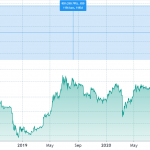The world of cryptocurrencies and blockchain has exploded in recent years. However, a lack of understanding surrounding this technology has led to a number of false beliefs and misconceptions, causing many people to approach digital assets with unwarranted suspicion and uncertainty. To combat this, Binance has made it part of its mission to provide accessible Web3 education to everyone and work to enhance crypto comprehension.
Through these efforts, Binance aims to debunk common misconceptions and promote greater crypto literacy. Their goal is to clear up confusion and help improve the general public’s understanding of crypto. It’s crucial to have a thorough understanding of the basics and think critically, as this will help people better comprehend and, ultimately, use cryptocurrency. Time to bust some crypto myths!
Myth: Crypto Is Only Used By Criminals
The use of crypto for illegal activities has been a topic of concern since the early days of this new form of digital currency. The public’s perception of cryptocurrencies as being inherently linked to criminal activities (such as money laundering, drug trafficking, and cybercrime) can largely be traced back to the early media coverage around cryptocurrency — specifically the infamous Silk Road marketplace.
Silk Road was an online black market that operated on the dark web from 2011 to 2013, offering a platform for the anonymous buying and selling of illegal goods and services using Bitcoin. The marketplace was notorious for its involvement in drug trafficking, and the association between crypto and Silk Road’s illicit activities contributed to the negative reputation of cryptocurrencies in the mainstream media.
The perceived anonymity and decentralization of crypto have given rise to concerns that they facilitate criminal activity. Many media outlets often choose to focus on high-profile cases of crypto-related crimes, furthering the idea that digital assets are mostly used by those seeking to engage in illegal activities while avoiding detection.
Reality: Data Shows That Crypto Is Mainly Used by Ordinary People
The reality is that crypto is primarily used by ordinary people and exists as a legitimate tool for a variety of everyday transactions. Binance alone has more than 120 million registered users. As with any emerging (or existing) technology, criminals will always use it for nefarious purposes. That said, illicit activity comprised just ~0.15% of crypto transactions in 2021 — down from 0.62% in 2020 despite the industry’s exponential growth — and money laundering accounted for 0.05%.
And don’t just take Binance’s word for it. This is data from Chainalysis, an independent blockchain analysis company. Chainalysis data is often used by government agencies, including the United States Federal Bureau of Investigation (FBI), Drug Enforcement Agency (DEA), and Internal Revenue Service Criminal Investigation (IRS CI), as well as the UK’s National Crime Agency (NCA), to investigate and combat crypto-related crimes.
In the traditional fiat space, close to $800 billion to $2 trillion is laundered every year, which is around 2-5% of the global GDP — as reported by the United Nations Office on Drugs and Crime (UNODC). Compare that to crypto, and the amount is a minuscule 0.03% of that. Criminals don’t like crypto because the fact that the transactions are publicly and permanently recorded actually enables investigators. In contrast with traditional financial investigations, the transparent nature of crypto makes it easier to identify bad actors.
Criminals Don’t Like Transparency
Blockchain is inherently transparent. All transaction data is recorded in a public ledger. Anyone at any time can examine the entire codebase. Using crypto for nefarious purposes leaves an excellent paper trail for prosecutors to lock in a conviction.
Europol and the Basel Institute on Governance have stated that crypto is key to tackling organized crime. You simply cannot move large amounts of money around without getting noticed. In fact, crypto exchanges continue to be one of the primary allies in the fight against criminal activity. For example, in 2021, Binance helped take down a cybercriminal ring laundering $500 million in ransomware attacks.
Law enforcement agencies remain the spearhead of the collective fight against crime. Acquiring the required resources, skills, and tools, as well as partnering closely with crypto companies, has been a top priority for agencies globally. In the US, the Treasury Dept has asked for more funding to track and fight crypto crime, and the DoJ and FBI have set up dedicated national cryptocurrency enforcement task forces.
In addition, the Financial Action Task Force (FATF), the global money laundering and terrorist financing watchdog, has issued standards for virtual assets mirroring the ones for fiat. But implementation has lagged behind: out of 200 countries committed to FATF standards, only 19 have implemented the one for virtual assets (as of March 2023).
Final Thoughts
The idea that crypto is primarily a hotbed of illicit activity is grossly overstated. In fact, the vast majority of crypto transactions and investments are legitimate and focused on real-world use cases with the potential to transform the global economy. The emergence of blockchain tech has opened up new opportunities for financial innovation, and cryptocurrencies are just one aspect of this rapidly-evolving landscape.
From decentralized finance (DeFi) to non-fungible tokens (NFTs), the potential applications of crypto and blockchain technology are vast and varied. The industry has only scratched the surface of what is possible. While there are certainly risks and challenges, it’s important to approach this exciting new tech with an open mind and a willingness to learn and adapt in order to fully realize its potential for positive impact. There should also be the appropriate guardrails in place to try and eliminate bad actors — something no financial services ecosystem is immune to.
Fact: Crypto is primarily used by ordinary people. Independent data shows that just 0.15% of crypto transactions involve illicit activity. If you’re a criminal, you’re more likely to get caught using crypto than if you use cash or the traditional finance system.
Further Reading
- The Myth That Digital Assets Don’t Have Intrinsic Value
- The Myth of Crypto Being Inherently Unsafe
- The Myth of Crypto Being Used For Tax Evasion
This is a sponsored post. Learn how to reach our audience here. Read disclaimer below.










